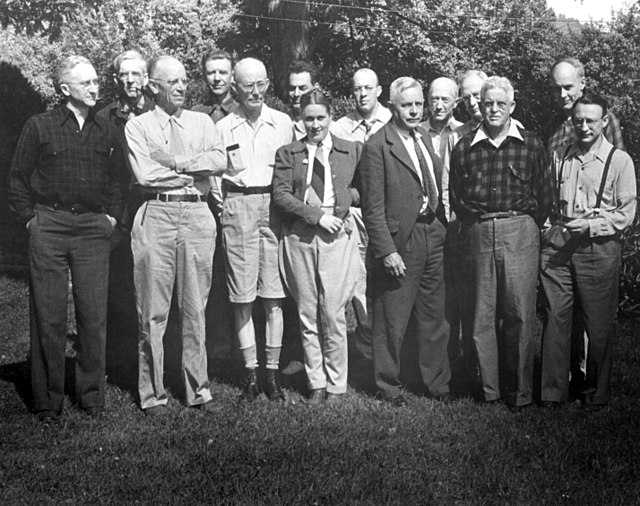Howard Zahniser of The Wilderness Society wrote the Wilderness Act of 1964. After over sixty drafts and eight years of work, President Lyndon B. Johnson signed the Wilderness Act into law on September 3, 1964, creating the legal definition of wilderness in the United States and protecting 9.1 million acres of federal land.
President Lyndon Johnson signs the Wilderness Act of 1964 in the White House Rose Garden. Also pictured are Interior Secretary Stewart Udall, Senator Frank Church, Mardy Murie, Alice Zahniser, and Representative Wayne Aspinall, among others.
Founding Members, Wilderness Society at Old Rag Mountain, VA in 1946. From left to right: Harvey Broome, Benston MacKaye, Aldo Leopold, Olaus Murie, Irving Clark, George Marshall, Laurette Collier, Howard Zahniser, Ernest Oberholtzer, Harold Anderson, Charles Woodbury, Robert Griggs, Ernest Griffith, and Bernard Frank.
The goal of Wilderness50 is to raise awareness of wilderness during the celebration of its 50th anniversary.
Wilderness or wildlands are natural environments on Earth that have not been significantly modified by human activity, or any nonurbanized land not under extensive agricultural cultivation. The term has traditionally referred to terrestrial environments, though growing attention is being placed on marine wilderness. Recent maps of wilderness suggest it covers roughly one-quarter of Earth's terrestrial surface, but is being rapidly degraded by human activity. Even less wilderness remains in the ocean, with only 13.2% free from intense human activity.
White Goat Wilderness Area in Canadian Rockies, Canada
Stephen Mather Wilderness in the U.S. state of Washington
Innoko Wilderness in the U.S. state of Alaska in the summer
A view of wilderness in Estonia







